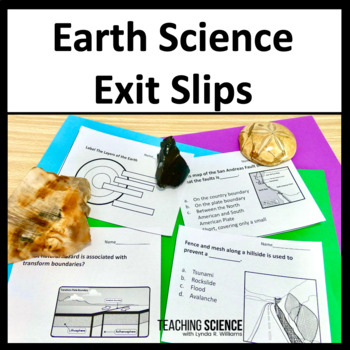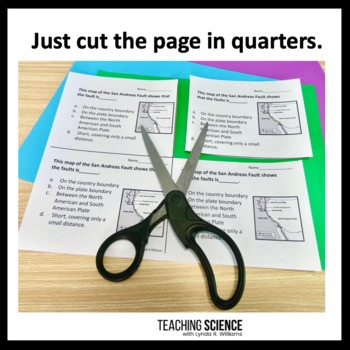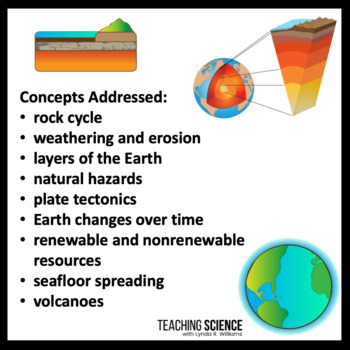Earth Science Exit Tickets - Rock Cycle - Weathering and Erosion - Assessment
- PDF
What educators are saying
Also included in
- This resource includes all my Earth Science Activities for 4th Grade. Students will learn about earthquakes, volcanoes, weathering, and erosion. They will read informational text and do fun labs for earth science. Save 20% by purchasing this bundle.4-ESS1-1. Identify evidence from patterns in rock fPrice $46.12Original Price $57.65Save $11.53
Description
Are you looking to assess quickly? Are you looking for test prep for science tests? These exit tickets for earth science will provide a formative assessment. Give one out each day to assess the learning of the lesson. These exit slips cover a variety of topics for earth science topics. Great review, formative assessment, and test prep.
There are a variety of ways you can use these exit slips.
I print these exit slips and have them cut and paperclipped together. They are ready to use when I need a quick formative assessment or a quick activity. Sometimes I allow students to answer as a group. Sometimes I allow students to use their notes. I often allow them to self-grade and correct when I am just using them as a review. I have students put completed exit slips in their notebooks. These tickets can also be used as a review at the beginning of the lesson or as test prep.
Included:
- 44 exit slips on ecosystems and food webs
- Directions
- Answer Keys
Concepts Addressed:
•rock cycle
•weathering and erosion
•layers of the Earth
•natural hazards
•plate tectonics
•Earth changes over time
•volcanoes and earthquakes
•renewable and nonrenewable resources
•seafloor spreading
If you have questions about my resources please contact me lywilliams1@gmail.com
* My resources are secure and not editable for copyright reasons. This resource is in pdf format.
Follow me and get news of my new resources. Each new resource is discounted by 50% for the first 24 hours!
You will also love my science bellringers and warm-ups:






